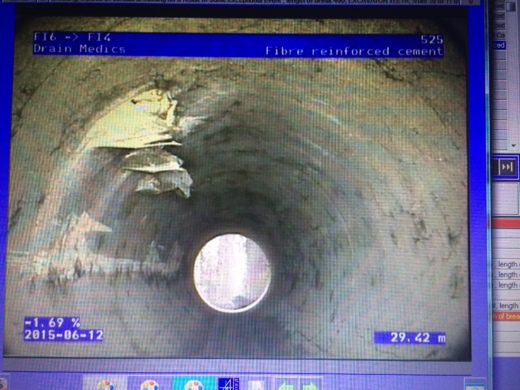Infrastructure planning is one of the biggest hurdles local Queensland councils face, with funding limits, environmental factors and zoning restrictions all playing a part. And while there are certainly more glamorous areas of spending, two of the key infrastructure points that need careful management are the waste water and drainage systems. Local councils are turning to companies like Drain Medics to perform sewer camera inspections to aid in the planning process.
How a trickle becomes a flood
Today’s solutions often become tomorrow’s problems; this is certainly the case when it comes to solutions that are kept out of sight, such as public drainage systems.
Except for sewer camera inspections, it’s rare for anyone to see what truly goes on beneath their feet. But the first step in planning drainage installations involves plotting out the estimated variables the system needs to handle. These can include what kind of waste, how much, where it goes, and how to handle blockages and excessive peak flows.
Then there are considerations made for future growth. Is a change in population density likely to occur that will impact on the drainage system’s capacity? Are there property zoning issues that require certain materials? Or environmental factors in place that require official certifications? Once these considerations have been made, the plans can progress.
With a new system, these requirements can be considered before any action is taken. But with an existing system, planning requires more information through the use of sewer camera inspections.
The future is fluid with Sewer Camera Inspections
Demands on drainage systems can change dramatically over time. Population and weather can impact their performance requirements. At the same time, environmental factors, accidents and basic wear and tear can reduce capacities and cause issues down the line.
Suddenly, a solution that worked so well that nobody even thinks about it becomes a big issue. Maybe the sewerage takes longer to clear than in the past, or maybe storm water sits in puddles on the side of the streets – a serious concern for states like Queensland that experience intense deluges during the rainy season. The truth is, they aren’t going to know there’s a problem until it’s lapping on their doorstep.
At any rate, local residents who have to live with the unfortunate developments will become increasingly irate.

Pulling the plug
Of course, there is a way to make sure that today’s solutions stand up to the passage of time. And that involves regular sewer camera inspections as part of future development planning.
Every infrastructure development has a useful shelf-life attached to it. After a certain amount of time, the conveniences it delivers begin to get outweighed by the time, labour and supplies required to keep it running.
In addition, new developments may require changes to existing drainage systems. A growing population, new suburb developments – these can all impact on the requirements placed on existing sewerage and storm water installations.
The first step would be to get a good look at the drainage system’s current state. CCTV sewer camera inspections give planning teams the granular details they need to get to grips with future drainage requirements.
Drain Medics in Queensland offers cutting edge drainage and sewer camera inspections, which helps give local council planning experts an unobstructed view of the system as it stands. With this information at hand, choke points and future issues can be handled before they become an issue.











